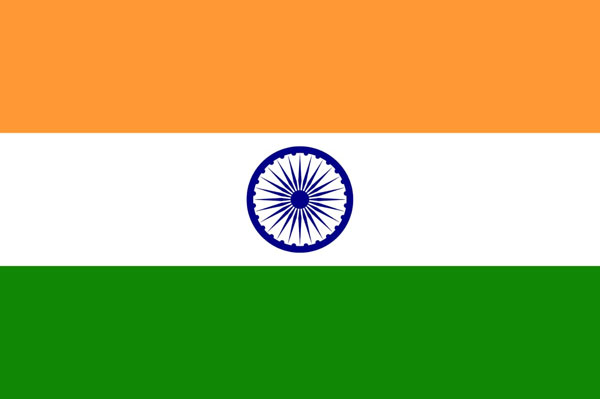Begum Sombru
Begum Sombre (1753- 1836), popularly known as Begum Samru, started her career as a Nautch girl in 18th Century India, and eventually became the ruler of Sardhana, a principality near Meerut. Later on, she played a key role in the politics and power struggle in 18th and 19th century India. She was the head of a professionally trained mercenary army, inherited from her European mercenary husband, Walter Reinhardt. This mercenary army consisted of Europeans and Indians. She is also regarded as the only Catholic Ruler in India, as she ruled the Principality of Sardhana in 18th and 19th century India. She died immensely rich. Her inheritance was assessed as approximately 55.5 Million Gold Mark in 1923 and 18 Billion Deutsch Mark in 1953. Her inheritance continues to be disputed to this day. An organization named "Reinhards Erbengemeinschaft" still strives to resolve the inheritance issue. Begum samru's career: Begam Samru/sumroo was of slight stature, of fair complection, distinguished by exceptional leadership abilities of uncommon order. She possessed a daring, seldom possessed by her sex- having more than once headed her own troops in action. When she was in her early teens, she married (or started living with) a mercenary soldier Walter Reinhardt Sombre of Luxembourg, who was operating in India. Walter Reinhardt Sumroo, a European mercenary, then 45-year-old, came to the red light area and fell for the charms of Farzana, then a girl of 14. With the most famous mosque of Delhi Jama Masjid built in 1644 in the vicinity, it is an unusual street that has several famous religious shrines, belonging to different religions, that coexist lending the street a genuine cultural harmony. Begam was baptized, at the age of about forty, by a Roman Catholic priest, under the name of Joanna, on the 7th of May, 1781.
Palace at Shadhana and Chandni Chowk

The palace built by her in Sardhana, near Meerut was the centre of much activity during the reign of Mughal Emperor, Akbar Shah. Shah Alam, the predecessor and father of Akbar Shah, regarded Begum Sumroo as his daughter. The palace was sold in 1847 to Lala Chunna Mal by David Dyce Sombre. Her palace survives but the garden in which it stood has vanished. Why it was known as Chudiwali-ki-Haveli was perhaps because of the Begum's 'past' in the red light area, though some have other explanations. A similar palace built by her in Sardhana is now a college.
Death
She died at the age of 90 in 1836. Her grandson, through her stepson, Dyce Sombre died in 1851 at London, from where his body was brought to Sardhana and buried beside the Begum in the imposing church she had built there. It is the centre of two annual pilgrimages in March and November, when thousands come to bless the Begum and pray to the Virgin Mary.
Lord William Bentinck's letter to Begum Samru
Lord William Bentinck was an excellent judge of character and the following letter will show how deeply his visit to that part of the country had impressed him with a sense of her extensive usefulness:
To Her Highness the Begum Sumroo. My esteemed Friend,--I cannot leave India without expressing the sincere esteem I entertain for your highness's character. The benevolence of disposition and extensive charity which have endeared you to thousands, have excited in my mind sentiments of the warmest admiration; and I trust that you may yet be preserved for many years, the solace of the orphan and widow, and the sure resource of your numerous dependants. To-morrow morning I embark for England; and my prayers and best wishes attend you, and all others who, like you, exert themselves for the benefit of the people of India. I remain, with much consideration.
Your sincere friend,
(Signed)
M. W. BENTINCK
Calcutta
March 17, 1835
Zakir Husain College
Zakir Husain College , formerly known as the Delhi College founded in 1792, is the existing oldest educational institution in Delhi, and part of the University of Delhi (DU), offering undergraduate and post graduate courses, in Arts, Commerce, Sciences [2][3]. It has had a considerable influence on the modern education as well as the Urdu and Islamic learning in India, and today remains the only DU college offering BA (Hons) inArabic and Persian
Established : 1792
Principal : Dr. Mohd Aslam Paravaiz
Location : Jawaharlal Neharu Marg, New Delhi - 110001
Former Name : Delhi College
Affiliations: University of Delhi
Website : www.zakirhussaincollege.in
History
It was initially founded by Ghaziuddin Khan, a general of Mughal Emperor Aurangzeb, with the support of local nobility, an oriental college for literature, science and art, was established at the site in 1792. It stood just outside the walled city of Delhi outside the Ajmeri Gate, close to the New Delhi railway station. It was originally surrounded by a wall and connected to the walled city fortifications and was referred to as the College Bastion. It was reorganized as the 'Anglo Arabic College' by the British East India Company in 1828 to provide, in addition to its original objectives, an education in English language and literature. It was renamed Zakir Husain College in 1975 after Dr. Zakir Husain, a distinguished educator and a President of India. The college was later shifted to outside Turkman Gate in 1986, the old structure in in the Madrasa Ghaziuddin complex, still houses a hostel for the college. It was declared a heritage monument by the ASI in 2002.
Alumni and Impact
It has had a number of distinguished alumni. Sir Syed Ahmed Khan, the founder of Aligarh Muslim University, Liaqat Ali Khan, Pakistan's first Prime Minister, Maulana Mohammed Hussain Azad, the father of Urdu prose, Deputy Nazir Ahmed, the Urdu essayist and ICS, poets, Ali Sardar Jafri and Akhtar ul-Iman, Mirza M N Masood, an Indian hockey Olympian, Khwaja Ahmed Farooqui (literatteur), Prof A N Kaul (pro-vice chancellor, Delhi University), J N Dixit (defence analyst), Prof Gopi Chand Narang (world renowned Urdu/Persian critic), Pankaj Vohra (associate editor, Hindustan Times), B N Uniyal, Shahid Siddiqui, Manmohan, Noor Jahan Sarwat, Mukul Vyas, Chandra Prabha and Habib Akhtar, M Afzal (all eminent journalists) and politicians like Jagdish Tytler and Sikandar Bakht. Ghalib was once a candidate for the Persian post for the Delhi College, however the administrator conducting the interview failed to come out to greet him, and Ghalib left.
M. W. BENTINCK
Calcutta
March 17, 1835
Zakir Husain College
Zakir Husain College , formerly known as the Delhi College founded in 1792, is the existing oldest educational institution in Delhi, and part of the University of Delhi (DU), offering undergraduate and post graduate courses, in Arts, Commerce, Sciences [2][3]. It has had a considerable influence on the modern education as well as the Urdu and Islamic learning in India, and today remains the only DU college offering BA (Hons) inArabic and Persian
Established : 1792
Principal : Dr. Mohd Aslam Paravaiz
Location : Jawaharlal Neharu Marg, New Delhi - 110001
Former Name : Delhi College
Affiliations: University of Delhi
Website : www.zakirhussaincollege.in
History
It was initially founded by Ghaziuddin Khan, a general of Mughal Emperor Aurangzeb, with the support of local nobility, an oriental college for literature, science and art, was established at the site in 1792. It stood just outside the walled city of Delhi outside the Ajmeri Gate, close to the New Delhi railway station. It was originally surrounded by a wall and connected to the walled city fortifications and was referred to as the College Bastion. It was reorganized as the 'Anglo Arabic College' by the British East India Company in 1828 to provide, in addition to its original objectives, an education in English language and literature. It was renamed Zakir Husain College in 1975 after Dr. Zakir Husain, a distinguished educator and a President of India. The college was later shifted to outside Turkman Gate in 1986, the old structure in in the Madrasa Ghaziuddin complex, still houses a hostel for the college. It was declared a heritage monument by the ASI in 2002.
Alumni and Impact
It has had a number of distinguished alumni. Sir Syed Ahmed Khan, the founder of Aligarh Muslim University, Liaqat Ali Khan, Pakistan's first Prime Minister, Maulana Mohammed Hussain Azad, the father of Urdu prose, Deputy Nazir Ahmed, the Urdu essayist and ICS, poets, Ali Sardar Jafri and Akhtar ul-Iman, Mirza M N Masood, an Indian hockey Olympian, Khwaja Ahmed Farooqui (literatteur), Prof A N Kaul (pro-vice chancellor, Delhi University), J N Dixit (defence analyst), Prof Gopi Chand Narang (world renowned Urdu/Persian critic), Pankaj Vohra (associate editor, Hindustan Times), B N Uniyal, Shahid Siddiqui, Manmohan, Noor Jahan Sarwat, Mukul Vyas, Chandra Prabha and Habib Akhtar, M Afzal (all eminent journalists) and politicians like Jagdish Tytler and Sikandar Bakht. Ghalib was once a candidate for the Persian post for the Delhi College, however the administrator conducting the interview failed to come out to greet him, and Ghalib left.


 Shahjahanabad Redevelopment Corporation
Shahjahanabad Redevelopment Corporation 


